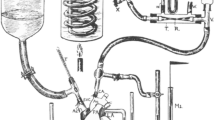Abstract
We have used regional electrical impedance at 2.5 and 100 kHz over nine body sections (two thoracic, one abdominal, two thigh, two around the knee, and two lower leg) in eight subjects to determine the volume indifference point defined as the level at which fluid volume remained constant independent of body position changes in space. Passive head-up tilt and tilt with activation of the venous muscle pump of the legs were performed in 10° increments from 0 to 60° over 6 min. The impedance changes in relation to 0° were similar for the two frequencies. Over the thorax it increased in proportion to the head-up tilt angle by a mean of 3.8 (range 1.9 to 9.3) Ω (100 kHz) at 60° (P < 0.05), while the abdominal impedance did not change significantly. Over the thigh it decreased with increasing head-up tilt angle by a mean maximum of − 2.3 (range − 9.4 to − 0.4) Ω and over the lower leg by a mean of − 2.7 (range − 6.0 to − 0.8) Ω. There were only marginal changes around the knee, mean − 1.5 (range − 2.3 to − 0.2) Ω (P < 0.05), and no change around the ankle indicating that little or no fluid was accumulated in these regions. Changes in impedance during passive and active head-up tilt did not differ significantly in any but one position: between the greater trochanter and the mid thigh, where during passive tilt it decreased by a mean of − 4.8 (range − 9.4 to − 1.9) Ω, and with activation of the venous pump by a mean of only − 1.2 (range − 1.9 to − 0.4)Ω (P < 0.05). These results indicated that the vascular volume indifference point was positioned between the navel and iliac crest both during the passive and active head-up tilts although during the passive tilt, apparently more fluid was accumulated in the vessels of the thigh.
Similar content being viewed by others
References
Gauer OH, Thorn HL (1965) Postural changes in circulation. In: Hamilton WF (ed) Handbook of physiology. American Physiological Society, Washington DC, pp 2409–2439
Hanel B, Clifford PS, Secher NH (1994) Restricted postexercise pulmonary diffusion capacity does not impair maximal transport for O2. J Appl Physiol 77:2408–2412
Jònsson F, Madsen P, Jørgensen LG, Lunding M, Secher NH (1995) Thoracic electrical impedance and fluid balance during aortic surgery. Acta Anaesthesiol Scand 39:513–517
Matzen S, Perko G, Groth S, Friedman DB, Secher NH (1991) Blood volume distribution during head-up tilt induced central hypovolaemia in man. Clin Physiol 11:411–422
Larsen FF, Mogensen L, Tedner B (1987) Transthoracic electrical impedance at 1 and 100 kHz — a mean for separating thoracic fluid compartments. Clin Physiol 7:105–113
Pawelczyk JA, Matzen S, Friedman DB, Secher NH (1994) Cardiovascular and hormonal responses to central hypovolaemia in humans. In: Secher NH, Pawelczyk JA, Ludbrook J (eds) Blood loss and shock. Arnold, London, pp 25–36
Perko G, Payne G, Secher NH (1993) An indifference point for electrical impedance in humans. Acta Physiol Scand 148:125–129
Perko G, Perko MJ, Jansen E, Secher NH (1991) Thoracic impedance as an index of body fluid balance during cardiac surgery. Acta Anaesthesiol Scand 35:568–571
Pomerantz M, Delgado F, Eisman B (1970) Clinical evaluation of transthoracic electrical impedance as a guide to intrathoracic fluid volumes. Ann Surg 171:686–691
Shoemaker WC (1975) Pathophysiology and therapy of shock states. In: Walker WF, Talyor DE (eds) Intensive care. Churchill, Livingstone, Edinburgh, pp 51–76
Sjöstrand T (1953) Volume and distribution of blood and their significance in regulating the circulation. Physiol Rev 33:202–228
Sramek B, DeBow K (1988) Normal values of indexed global blood flow parameters and indices of left-ventricular performance and thoracic fluids measured noninvasively on resting adults subjected to postural changes by NCCOM3 (revision 7). BoMed Medical Manufacturing, Ltd., 5 Wrigley, Irvine, CA 92718
Wagner E (1886) Fortgesetzte Untersuchungen über den Einfluss der Schwere auf den Kreislauf. Arch Ges Physiol 39:371–386
Wilkins RW, Bradley SE, Friedland CK (1950) The acute circulatory effects of the head-down position (negative G) in normal man, with a note on some measures designed to relieve cranial congestion in this position. J Clin Invest 29:940–949
Author information
Authors and Affiliations
Rights and permissions
About this article
Cite this article
Perko, G., Tilgreen, R. & Secher, N.H. The venous pump does not affect the indifference point for electrical impedance in humans. Eur J Appl Physiol 72, 179–182 (1995). https://doi.org/10.1007/BF00964135
Accepted:
Issue Date:
DOI: https://doi.org/10.1007/BF00964135




